Performance management in 2025 is not just about reviews or rankings. It is about creating a culture of continuous feedback, aligning goals with strategy and helping employee development. With hybrid and remote work still present, organisations have come across new challenges like disconnected teams, unclear KPIs, and lesser engagement.
The right performance management solution doesn’t just help track performance. It solves these problems by providing clarity, structure, and actionable insights.
This guide ranks the Top 10 Best Performance Management Solutions in 2025 based on features, ease of use, real business needs, and scalability for all businesses.
Why Performance Management Tools Matter in 2025
- According to ThriveSparrow, 86% of HR leaders say performance management software is important for holding top talent in a hybrid environment.
- 74% of employees feel more engaged when they get regular feedback, and not just annual reviews.
- Companies should use goal-alignment tools. It gives them 24% higher profitability, according to Gallup.
Pain Points Businesses Face:
- Managers don’t have visibility into team progress
- Employees don’t get feedback on time
- Goals aren’t aligned across departments
- Data is present in multiple tools
Modern performance management systems will solve these by offering centralised dashboards, automated workflows, and personalised feedback loops.
Related: How Effective Delegation Enhances Leadership Effectiveness
Comparison Table: Top Tools at a Glance
| Tool | Best For | Features | Price Tier | G2 Rating |
| Lattice | People-Driven Teams | OKRs, Reviews, 1:1s, Engagement | $$ | 4.7 |
| 15Five | SMBs+ Engagement | Check-ins, Goals, Coaching tools | $$ | 4.6 |
| Culture Amp | Employee Experience | Feedback, 360 Reviews, Surveys | $$$ | 4.5 |
| Betterworks | Enterprise Alignment | OKRs, Continuous Feedback, Analytics | $$$$ | 4.4 |
| Leapsome | Scalability | Reviews, Surveys, OKRs, Learning | $$ | 4.6 |
| Trakstar | Custom Workflow | Goal Setting, Reviews, Succession | $$ | 4.3 |
| ClearCompany | Talent + Performance | ATS, Onboarding Performance | $$$ | 4.2 |
| Reflektive | Real-Time Feedback | Feedback, Goals, Recognition | $$ | 4.4 |
| Workday HCM | Enterprises | Talent Management, HRIS, Analytics | $$$$ | 4.3 |
| PerformYard | Simplicity | Reviews, Goals, Reporting | $ | 4.5 |
1. Lattice – Best All-Round for Growing Teams
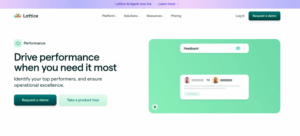
It combines performance management with employee engagement. It gives HR leaders and managers a full view of team health. It has customizable review cycles, real-time feedback, and goal alignment with OKRs.
Pain Points Solved:
- Difficulty tracking progress remotely
- Limited visibility into employee growth
- Managers need coaching frameworks
Features:
- OKRs & goal tracking
- Weekly 1:1 agendas and templates
- Engagement surveys and analytics
- Performance reviews with calibration tools
Best for: Mid-sized companies scaling fast with a people-first culture.
2. 15Five – Best for Small to Mid-Sized Businesses
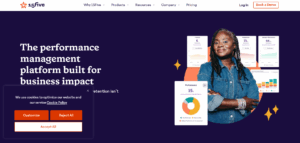
This tool focuses on giving high performance through continuous check-ins and feedback. Its “Best-Self Review” system encourages development rather than just evaluation.
Pain Points Solved:
- Employees are not receiving actionable feedback
- Managers are struggling to stay consistent with check-ins
- Disengagement in remote/hybrid setups
Features:
- Weekly check-ins with pulse questions
- Goals and OKRs
- Manager coaching hub
- Engagement surveys
Best for: SMBs looking for affordable, high-impact tools to boost engagement.
Related: Top 5 Qualities That Make a Great Leader
3. Culture Amp – Best for Deep Feedback and Engagement

It offers advanced employee experience tools, including 360-degree feedback and analytics. It stands out for its science-backed survey templates and focus on DEI.
Pain Points Solved:
- Lack of structured peer feedback
- Difficulty measuring cultural health
- Struggles with diversity-related engagement
Features:
- Powerful analytics dashboard
- 360 reviews and self-assessments
- Engagement and DEI surveys
- Onboarding and exit insights
Best for: HR leaders focusing on culture, inclusion, and engagement, along with performance.
4. Betterworks – Best for Enterprise Performance Alignment
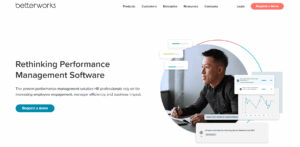
It is good at aligning company-wide objectives and integrating feedback through all teams. It’s perfect for large organisations that need strong OKR tracking and performance analytics.
Pain Points Solved:
- Misalignment of departmental goals
- Manual performance tracking in large orgs
- Inconsistent feedback cycles
Features:
- OKR management
- 1:1 feedback loops
- Calibration dashboards
- Analytics for HR and leadership
Best for: Enterprises that need alignment throughout different divisions and clear reporting.
Related: The Impact of Advanced Performance Management Technologies
5. Leapsome – Best for All-in-One Scalability
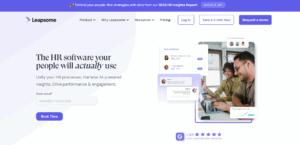
It combines reviews, goals, engagement, and learning in one unified platform. It has a modern structure, which makes it flexible for growing companies.
Pain Points Solved:
- Managing multiple HR tools
- Inconsistent employee development tracking
- Low feedback culture
Features:
- Performance and 360 reviews
- OKRs with progress tracking
- Learning paths
- Pulse surveys
Best for: Mid-sized companies for growth-focused cultures.
6. Trakstar – Best for Custom Review Workflows
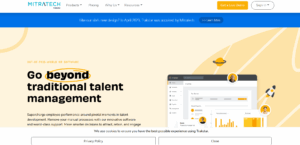
Trakstar gives companies detailed control over the structure of reviews. It makes them perfect for organisations with unique workflows and needs.
Pain Points Solved:
- One-size-fits-all review tools
- Manual data tracking for HR compliance
- Lack of succession planning
Features:
- Goal setting and alignment
- Custom review forms
- Automated reminders
- Succession and appraisal tracking
Best for: Organisations in regulated industries or with formal HR protocols.
Related: Overcoming Real Estate Challenges with Leadership Counseling
7. ClearCompany – Best for Talent + Performance Integration
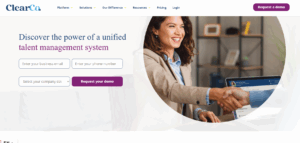
It connects applicant tracking with performance reviews, making it great for teams that want to track employee performance from hiring to development.
Pain Points Solved:
- Disconnected hiring and performance tools
- Poor onboarding follow-through
- Limited visibility into new hire success
Features:
- ATS and onboarding tools
- Competency management
- Goal tracking and feedback
- HR analytics
Best for: Companies that want a full lifecycle employee visibility.
8. Reflektive – Best for Real-Time Feedback Culture
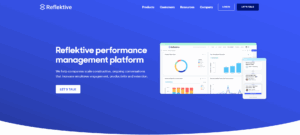
It has lightweight, real-time feedback, real-time feedback features that are integrated directly into workplace tools like Gmail and Slack.
Pain Points Solved:
- Low feedback frequency
- Employees are unsure of how they’re doing
- Feedback is delayed until formal reviews
Features:
- In-app real-time feedback
- Goal setting
- Check-ins and recognition
- Lightweight performance reviews
Best for: Fast-moving teams and startups that have flat structures.
9. Workday HCM – Best for Full-Scale HR Integration
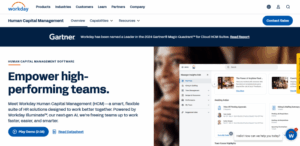
Workday is an enterprise-grade solution. It is built for large organizations that want performance management in a larger HR network.
Pain Points Solved:
- Broken HR and performance data
- Complicated reporting requirements
- Global workforce performance visibility
Features:
- Talent marketplace
- Succession Planning
- Skill tracking
- Automated insights
Best for: Large enterprises with complex HR needs.
10. PerformYard – Best for Simplicity and Affordability
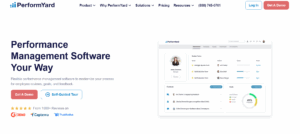
It is a simple, flexible platform that covers the important parts without complicating them. It is cost-effective and great for companies that have just started formal performance management.
Pain Points Solved:
- Manual spreadsheets or docs for reviews
- Inconsistent review schedules
- Budget constraints
Features:
- Goal tracking and reviews
- Dashboards and analytics
- Flexible review cycles
- Custom forms
Best for: Small teams and organisations shifting from manual processes.
Choosing the Right Solution
The best performance management solution in 2025 is not about which one has the most features. It all comes down to what works best for your company. So, think about these before making a decision:
- Company size
- Budget constraints
- Hybrid vs. in-office workforce
- The need for engagement and cultural tools
- Integration with existing HR tech stack
Whatever you prioritise – employee development, goal alignment, or engagement, there is a tool that solves your specific challenges.
